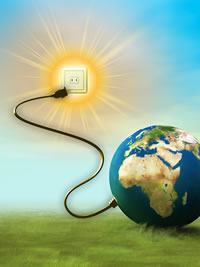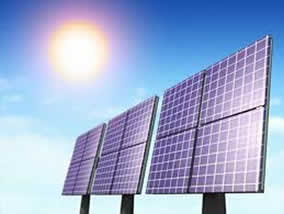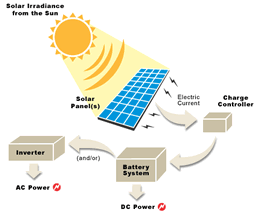Mozambique ripe for solar energy.
 Mozambique has a huge and virtually unexploited solar potential. Annual incident solar radiation, distributed evenly across the country, is about 1.49 million GWh – thousands of times more than the country’s current annual energy demand.
Mozambique has a huge and virtually unexploited solar potential. Annual incident solar radiation, distributed evenly across the country, is about 1.49 million GWh – thousands of times more than the country’s current annual energy demand.
The electrification rate is just 14%. It is estimated at 26% of urban areas and estimated 5% of rural areas. In rural districts, kerosene is the main fuel for lighting.
Nearly all of Mozambique’s electricity is produced by the Cahora Bassa Dam, built and completed before independence. Some 60% of Cahora Bassa electricity is used by the Mozal aluminium plant, 30% is a net export to South Africa and, to a lesser extent, Zimbabwe, and the rest used in Mozambique. However, there is no direct line within Mozambique to the main consumption center, the Maputo province. The main line goes through South Africa.
Read more
Electricity costs set to soar in South Africa
Electricity supply in South Africa remains an issue as demand continues to increase and the existing infrastructure battles to keep up. As a result, the South African commercial sector can expect regular price hikes in the future.
“Eskom has announced an average increase in electricity cost of approximately 15% p.a. over the next 5 years." Business Day (July 2012)
Eskom's wholesale price was 44c/kWh in 2010. Experts feel 97c/kWh is the price consumers will be paying within the short to medium term.
Read more
Advantages & Disadavantages of Solar
Solar energy is becoming increasingly popular as the world begins to take notice of the burgeoning carbon emission problems that come with burning fossil fuels. But why all the fuss?
Nay-sayers have become less and less vocal as solar energy’s popularity has grown increasingly unhindered. What are the advantages and disadvantages of solar energy.
Read more

How a Solar Panel works
Solar panels work through what is called a photovoltaic process – where radiation energy (photo) is absorbed and generates electricity (voltaic).
Radiation energy is absorbed by semi conductor cells – normally silicon – and transformed from photo energy (light) into voltaic (electrical current).
When the sun’s radiation hits a silicon atom, a photon of light energy is absorbed, ‘knocking off’ an electron.
Read more





